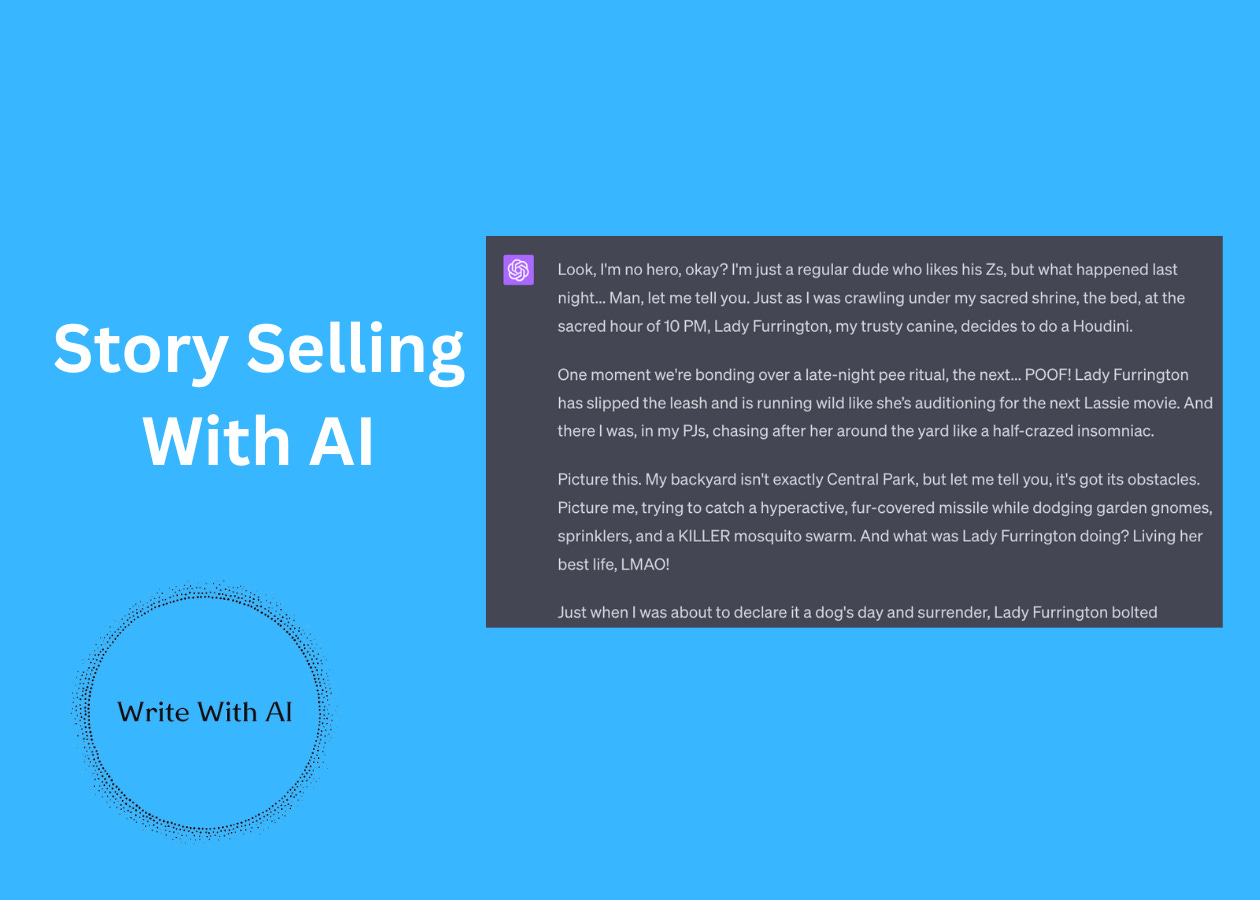Story Selling With AI: How To Tell A Story That Prints Money Like Twitter “Copythinker” George Ten
This is how you win others to your way of thinking.
Ahoy, Digital Writers!
Today we are going to train ChatGPT to tell a story like George Ten (aka The Grammar Hippy).
George is a master copywriter, thinker, and prominent figure on Twitter. He’s written multiple 6 figure sales pages and used his “Copythinking” method to build a $8.5 million store.
George sends a weekly newsletter that magically pulls readers into his products with story.
Recently, he shared his framework for how he does it. And whenever you see a framework, you, my dear Digital Writer, should be thinking, “How can I get my Digital Assistant to do this for me?!”
Let’s dive in!
Telling a captivating story is the most powerful way to win others to your way of thinking.
Stories play a crucial role in your ability to build an engaged audience.
They engage and move readers to action through emotion.
They add depth and meaning—helping the reader understand “why?”
They offer more than “just the facts,” they invest the reader in the outcome.
Whether you are curating stories or telling personal stories, they make it easy for the reader to both identify with you and deepen their relationship with you (especially within a specific niche).
If you can tell a compelling story, you can shape the world!
Viral-worthy stories start with everyday moments.
The best stories are short, personal, and relatable.
Think about it for a minute. What’s the last story you remember hearing? Was it a blockbuster hit or was it something that caught your attention in passing? I am willing to bet what came to mind (i.e. one that impacted or influenced you) was either told by a friend or it was something you read on the internet.
You don’t have to be J.K. Rowling, Steven King, or George Lucas to craft a compelling story.
You just need 3 simple ingredients.
Ingredient 1: The Event. Recall the key events that shaped your day. What happened during your day? Find something that stood out to you, a difficult situation, something that made you laugh, or cry.
Ingredient 2: The Impression. Identify why each event left an impression on you. Dig in and unpack what happened. Why does the event stand out?
Ingredient 3: The Takeaway. Identify the lesson or takeaway. What did your experience say about you, life, or the world? This is the bonding element that allows the reader to see something deeper or more possible for themselves through your story. What’s in it for the reader—problem solved, obstacle overcome, or an “Aha!” moment?
All you need is 1 part "attention" (the events in your day), 3 parts "intention" (building a habit of collecting, writing, and sharing your stories), and a dash of Write With AI—and you'll be off to the races.
Easy!
George Ten’s framework for telling stories that sell.
Now that you have the necessary ingredients for your story, you need to tell it.
Tell it to a friend over coffee
Ship it in your next email newsletter
Share it on Twitter, LinkedIn, your blog etc.
George recommends a 5 part-framework for telling a good story.
Tell the story in 1st person. When you tell a story from your perspective, you build trust and connection with your reader. Tell the story from your own eyes. How did you see and experience the event?
Start from the MOST interesting place. Start your story right before or right after any event you uncovered above. Get to the action!
Follow a logical sequence. Give your story shape—beginning, middle, and end. This happened. So what? So this. Then what? This. So what? So this. Help the reader follow along. I went to the story. I bought milk. I dropped it and it splattered all over the check-out aisle
Keep attention using open loops and sub-headlines. Make sure the story flows. Use emotions and observations as break-points in between to keep the reader engaged.
Plug your product / service. Drop a link at the end or in the middle, it doesn’t matter.
Simple, right?!
Here’s a fill-in-the-blank template you can use to quickly put the ingredients together using George’s framework.
I wanted to ____ but ___ and so ___. The lesson: ___.
For example: **
It was 10 PM and I wanted to go to bed but my dog broke away from the leash. So I had to spend the next half hour chasing her around the yard before catching her. She was lucky I didn't just leaver her in the wild. The lesson: I love my dog and I love my sleep, but when the dog interrupts my sleep all bets are off. Just like a good story in your email that pulls you down the rabbit hole, away from your inbox, and into ChatGPT to write like George!
Let’s see what our Digital Intern thinks.
Keep reading with a 7-day free trial
Subscribe to Write With AI to keep reading this post and get 7 days of free access to the full post archives.





